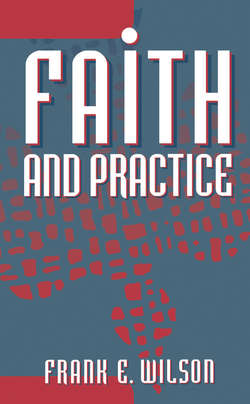Читать книгу Faith and Practice - Frank E. Wilson - Страница 16
На сайте Литреса книга снята с продажи.
THE NEW TESTAMENT
ОглавлениеIt is important to remember that our Lord wrote nothing. It is also important to remember that for many years after the Church was launched on its career there were no Christian writings at all such as we have now in the New Testament. There was no need for them at the beginning. Our Lord was called “Rabbi” and plainly followed rabbinical methods in instructing His Apostles. These consisted in reiterating to a small, intimate group brief summaries of His teachings which were carefully learned word for word. To these memorized “Sayings” were added eye-witness accounts of things which the Apostles had seen Him do. All this formed the substance of apostolic teaching—“all that Jesus began both to do and teach.”7 From place to place the Apostles traveled, repeating their story and teaching others as they themselves had learned.
These oral accounts of the Messiah circulated through Jewish communities all over the ancient world. Year after year pilgrims from everywhere came up to the Holy City for the annual feasts and sought further instruction. In Jerusalem the Apostles met these inquirers in groups—much as the boy Jesus sat “in the midst of the doctors”—and taught them to memorize the Sayings of Christ, His parables and oral accounts of His deeds. Such official teaching was carried away to all quarters and comprised the Christian Tradition referred to by St. Paul—“hold the traditions which ye have been taught.”8
Then conditions began to change. The number of inquirers became so numerous that it was increasingly difficult to care for them by the group method. These brief, concise instructions began to be written down so they could be carried home by the pilgrims. Also the growing Church brought more and more non-Jews into the fold who knew only Greek and who were unaccustomed to the rabbinical teaching by word of mouth. The Gentiles wanted it in written form. So the Sayings of our Lord, or the “Logia,” came into existence.
Then something else happened. St. Paul introduced a new style of letter-writing. In his missionary activity he went from city to city preaching and teaching the “tradition” and organizing congregations of Christians. But he was always under pressure to seek out new fields, and there were enemies on his track only too eager to tear down what he had erected as soon as he moved on to another place. St. Paul soon felt the necessity of following up his work by correspondence. He conceived the idea of writing letters (“epistles”) addressed, not to an individual person, but to a congregation for public reading. A few personal letters that he wrote have been preserved, but most of them were sent to entire congregations, often with instructions to send copies to neighboring congregations. These letters were not intended to introduce Christ to people who had no knowledge of Him. They were written to reinforce the teaching the Apostle had already given, to answer questions and to deal with local problems of spiritual discipline and Christian behavior. St. Paul’s epistles always presupposed a knowledge of the Gospel on the part of his readers. Any attempt to understand them is hopeless unless this fact is kept quite clear.
It was about the year A.D. 50 that St. Paul sent his first letter to the Thessalonians, which is the earliest Christian writing to come down to us. Other epistles followed. It is significant to note that all of these epistles had been composed before the first of the four Gospels was committed to writing. When some critics insist that the simple Jesus of the Gospels was subsequently distorted by St. Paul’s subtle theology, it is well to remember that his epistles were all in circulation before any of the Gospels appeared. And it is not likely that the Church would have put its seal on Gospel records which were in conflict with the prevailing teaching about Christ—eventually gathering both into the canon of Holy Scripture.
From the very beginning, the Apostles were the accredited teachers. They had been His chosen companions, they had seen Him in action, and they had been trained by Him personally to fill the role of leaders. Those books which were written by Apostles, or by those who were close enough to the Apostles to give an accurate statement of apostolic teaching, were accredited by common consent and incorporated in the New Testament canon.
This is the Bible which continues year after year to be the best seller in the book market. It has been carried all over the world. It has been translated into a thousand languages and dialects. It has brought comfort, consolation, and enlightenment to countless numbers of people for the past nineteen centuries. No book has ever been under such persistent, critical scrutiny as this Book. It has been studied by the best minds of the ages—sometimes sympathetically, and often in a spirit of hostility. But through it all the Bible has come with flying colors, all the better authenticated because of the searching study to which it has been subjected. No intelligent person can afford to be ignorant of it. No Christian person can escape a sense of reverence for it.
1 St. Matthew 5: 43–44.
2 Exodus 21:24.
3 St. Luks 11:19.
4 Numbers 21:14–20; Joshua 10:12–13.
5 Exodus 15.
6 Judges 5.
7 Acts 1:1.
8 I Thessalonians 2:15.
